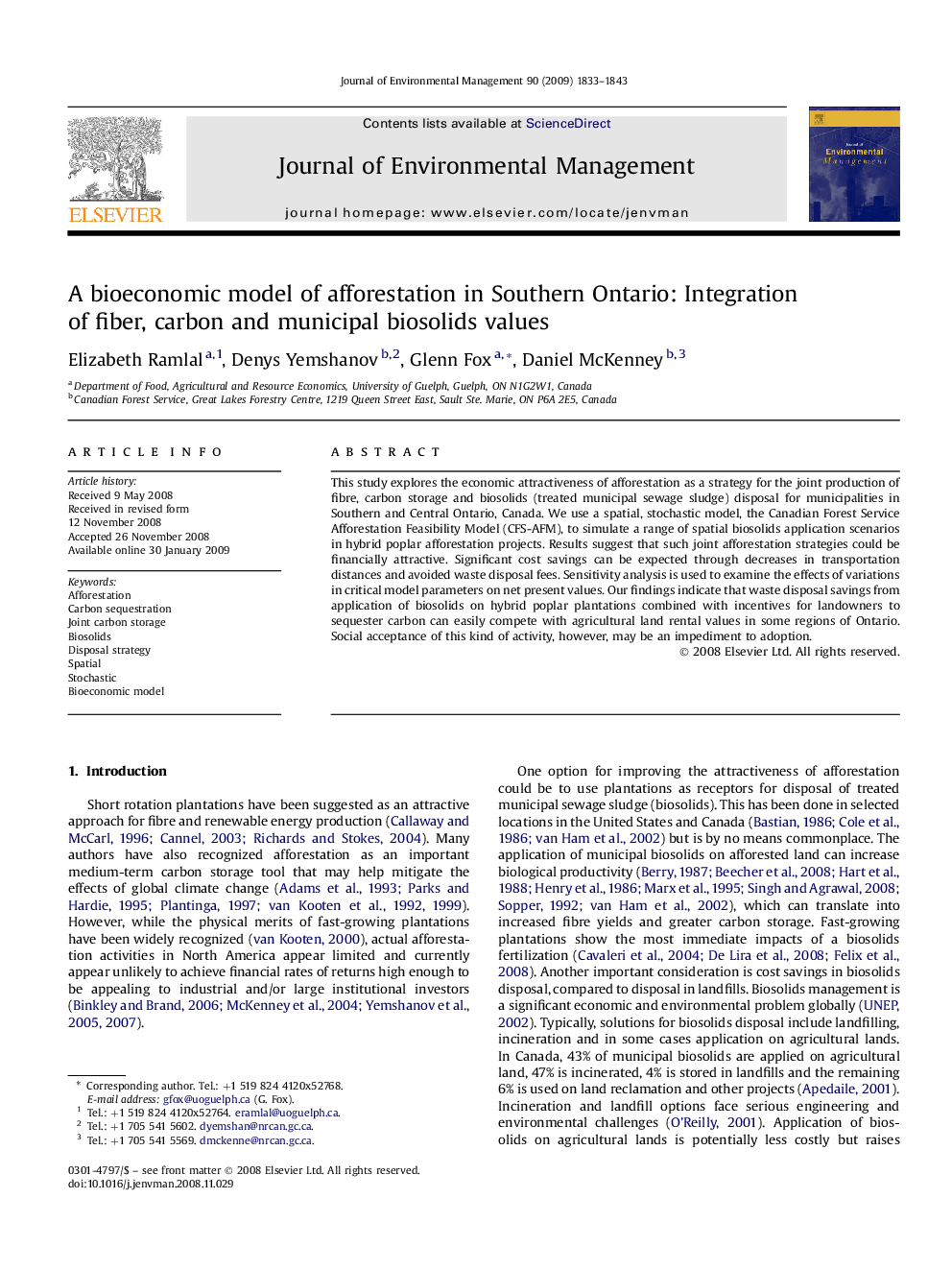| Article ID | Journal | Published Year | Pages | File Type |
|---|---|---|---|---|
| 1057375 | Journal of Environmental Management | 2009 | 11 Pages |
This study explores the economic attractiveness of afforestation as a strategy for the joint production of fibre, carbon storage and biosolids (treated municipal sewage sludge) disposal for municipalities in Southern and Central Ontario, Canada. We use a spatial, stochastic model, the Canadian Forest Service Afforestation Feasibility Model (CFS-AFM), to simulate a range of spatial biosolids application scenarios in hybrid poplar afforestation projects. Results suggest that such joint afforestation strategies could be financially attractive. Significant cost savings can be expected through decreases in transportation distances and avoided waste disposal fees. Sensitivity analysis is used to examine the effects of variations in critical model parameters on net present values. Our findings indicate that waste disposal savings from application of biosolids on hybrid poplar plantations combined with incentives for landowners to sequester carbon can easily compete with agricultural land rental values in some regions of Ontario. Social acceptance of this kind of activity, however, may be an impediment to adoption.
